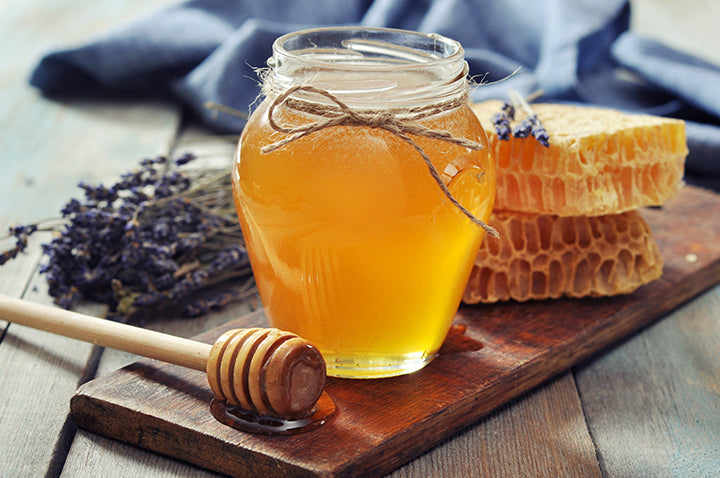
Diabetes 101: What to Eat and Why
If you have recently been diagnosed with diabetes, you are not alone. This diagnosis affects 8.3% of people worldwide. Metabolic syndrome, in which insulin resistance is common, affects 1 in 4 people worldwide; individuals with metabolic syndrome are 5 times more likely than average to develop type II diabetes. The issue is a serious one, with potentially devastating consequences. The good news is that much of the solution to both diagnoses lies in a handful of strategic diet and lifestyle choices. Growing Naturals Rice Protein and Pea Protein Powders are perfect partners in your quest to regain hormone balance and control over this diagnosis. The three main calorie-containing components of the diet, carbohydrate, protein, and fat, are all important for healthy insulin function. In addition to proportions between the three, qualitative choices within those categories can have profound influence on hormone balance.
Carbohydrates
Carbohydrates naturally occur in several types of foods: grains, vegetables, beans and legumes, fruits, and milk/yogurt. There are four different kinds of carbohydrates that affect our ability to maintain good insulin function: simple, complex, fiber, and resistant starch.
Simple carbohydrates
Simple carbs (aka simple sugars) are found primarily in fruits and processed foods containing sugar. Even though fruits contain natural sugar, many of them also contain compounds that help temper the resulting blood glucose response. As long as fruits are eaten in moderation and as part of a varied diet, they provide more benefit from their vitamins, minerals, and antioxidants and should not be avoided because of their sugar content. Sugar is often added to manufactured foods and beverages during processing. Sugars are easily identified, because their chemical names all end in “ose”—whether it’s glucose, fructose, maltose, or lactose, or other “ose”, it’s a carbohydrate and it should be consumed respectfully. When added as an ingredient, to processed foods, carbohydrates are most likely to increase blood sugar more quickly and for longer periods of time than carbohydrates as they occur in nature. It is these sugars, when eaten in excess, that appear to be the most destructive to overall health by promoting obesity, increasing oxidative stress, reducing the nutrient density of the diet, and stressing the ability of the body to maintain insulin and glucose balance.
Complex carbohydrates
Complex carbs are long chains of simple sugars that cannot be immediately absorbed. Slower absorption of these carbohydrates helps to keep blood sugar stable, and lower, for a longer period of time, than eating simple sugars can accomplish. You still need to watch the amount of complex carbohydrates you are eating, but when you DO choose to eat carbohydrates, the complex kind is more desirable than simple, added sugars. Complex carbohydrates requiring the longest time to break down, and therefore providing the best blood glucose benefit include: whole grains, beans, legumes, and starchy vegetables.
Resistant starches
Resistant starches are carbohydrates that are fermented before being absorbed. These starches are low glycemic, and they improve insulin function. Because they also feed the healthy bacteria in the digestive tract, they are considered to be prebiotic foods. Resistant starches provide fewer calories per gram than other carbohydrates, and help to reduce appetite, through a number of metabolic processes. Resistant starches can also help to increase fat metabolism, making it easier to lose weight. Growing Naturals’ rice protein and milk substitute are produced from brown rice, a recognized source of resistant starch. Other foods containing this carbohydrate include: beans, lentils, whole grain bread, oatmeal, barley, raw bananas (barely ripe-still green are best), and cooked-then-chilled pasta and potatoes.
Fiber
Fiber is a type of carbohydrate that is NOT digested or absorbed.
- Soluble fiber forms a soft, gel-like consistency when mixed with water. It is also low-glycemic. It is what causes foods like Metamucil (psyllium), chia seed, ground flax, and oatmeal to form a gel when hydrated. Growing Naturals protein powder contains 1 gram of soluble fiber per serving. Other foods high in this type of fiber include oat bran, barley, beans, split peas, lentils, apples, oranges, pears, strawberries, nuts, blueberries, and carrots.
- Insoluble fiber is the “sticks and twigs” type of fiber, found primarily in the outer brans of grains and skins of fruits and vegetables, seeds, barley, couscous, root vegetable skins, nut skins, and popcorn. This type of fiber adds bulk to the diet and promotes healthy intestinal functioning.
An insulin-friendly diet ideally should contain about 40% carbohydrate, primarily as complex carbohydrates, resistant starch, and fiber categories. This works out to about 800 calories per day in a 2000 calorie diet, stretched out across the day to help your body use these foods efficiently. 
Protein
Protein is also an important component of an insulin-friendly diet. It has several functions in regulating blood glucose. Most importantly, adequate protein is important for maintaining muscle mass. Research has indicated that as diabetics age, the rate of muscle loss they experience is double what is seen in non-diabetics. Strength-training exercise is important to reduce this loss, as is adequate dietary protein. Protein helps to reduce the magnitude of blood sugar fluctuations. A percent of the protein we eat is eventually turned into glucose, at a point when any carbohydrates we may have eaten have been absorbed out of the blood stream. Eating enough protein can help to reduce bouts of low energy and cravings for sweets that can come with low blood sugar. Protein eaten before bedtime can help to stabilize overnight blood sugar levels. Low blood sugar triggers stress hormone release, which can interfere with sleep, and cause high fasting blood sugars, reducing your appetite for a healthy breakfast. One of the best ways to reduce this vicious cycle, which often is the root cause behind a day alternating between consuming caffeine and sugar to maintain energy, is to get that protein at night just before bedtime. How about a Growing Naturals protein shake? Aim for 20-30% of your calories coming from protein. In a 2000 calorie diet, that is about 100-150 grams. Make sure enough water is consumed with high protein intake. If that feels hard to achieve, remember that a serving of Growing Naturals rice protein powder contains 24-25 grams of protein, about the same amount of protein as 3 ounces of meat and the pea protein contains 15-16 grams of protein.
Fat
Growing Naturals products contain very low fat. However, it is important to make strategic choices when eating fat to enhance the benefits you can achieve from using these products. Your diet should contain no more than 30% of its total calories as fat; for a 2000 calorie diet, this is about 65-70 grams. These grams, as best as possible, should be equally divided between three different types of fat.
Saturated fat
In its natural form, saturated fat is primarily found in animal and dairy fat, tropical (coconut and palm) oils, chocolate and in varying amounts in nuts. Aim for Avoid trans fat, a type of saturated fat that has been found to be associated with heart disease, found in margarines and processed foods. Coconut oil contains saturated fat. Be sure to use it in moderation, as even healthy foods lose their benefit when eaten in excess. To really reduce your risk of heart disease, consume no more than 7% of your calories as saturated fat. This is no more than 15 grams in a 2,000 calorie diet.
Monounsaturated fat
Monounsaturated fat, associated with improved health, lower cholesterol, and better blood glucose control is primarily found in olives, olive oil, nuts, canola oil, whole grain wheat and cereals, avocados, and avocado oil.
Polyunsaturated fat
This type is primarily found in liquid oils derived from seeds, nuts, poultry and some seafood. The type of polyunsaturated fat found in vegetarian sources tends to be higher in omega-6 fats, compared to certain seafood (like salmon), which tends to be higher in omega-3 fats. Emphasizing omega-3 fats and reducing omega-6 fat intake can help to improve insulin resistance. Polyunsaturated fats that are best to minimize are easy to remember; they all begin with the letters “s” and “c” (corn, cottonseed, soybean, safflower, sunflower, sesame). Canola oil and flaxseed oil are fine.
Bottom line
These guidelines are meant to get you started, and to understand the guidelines your own health care team has provided you. If you have not sought the advice of a Registered Dietitian with a Certified Diabetes Educator credential to calculate your own calorie needs and help you sort through which of the foods recommended above work best for your personal situation, now is a good time to make the investment. Edited By: Scarlett Full, in-house Registered Dietitian
